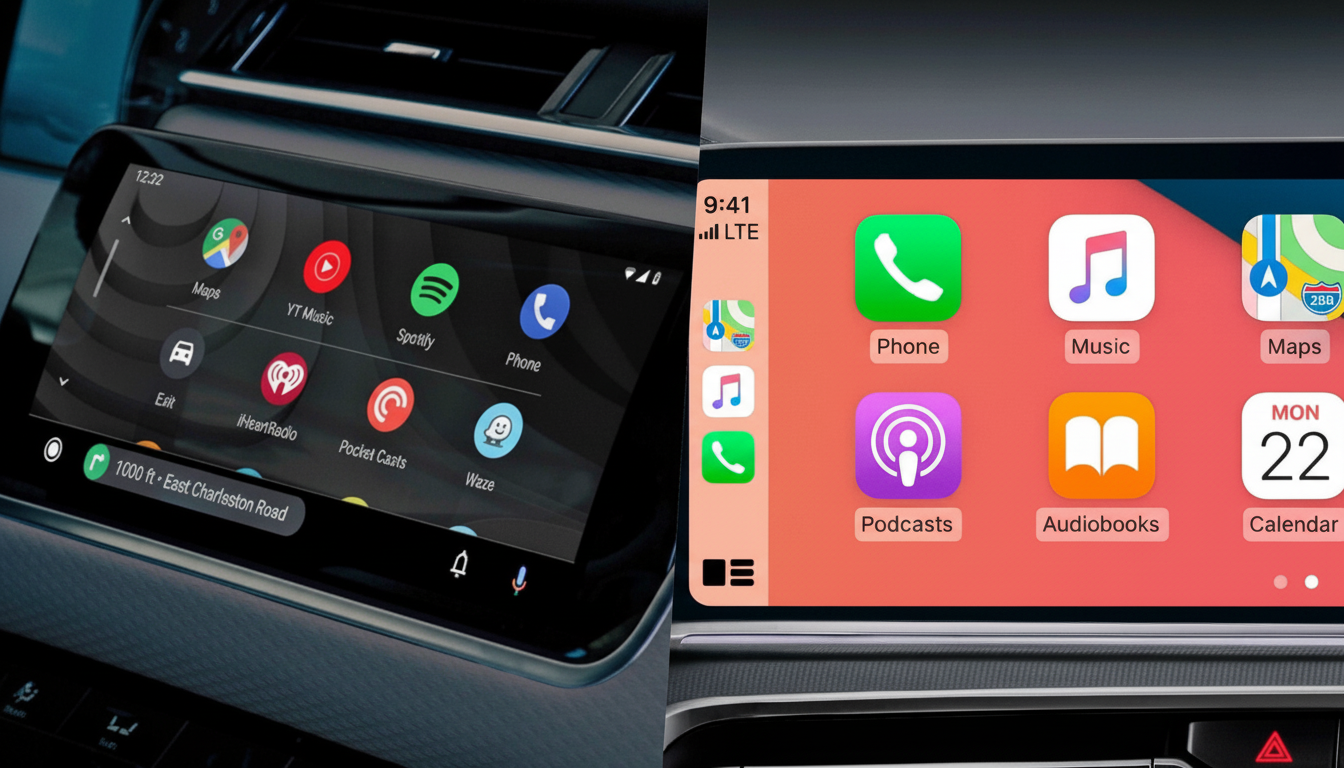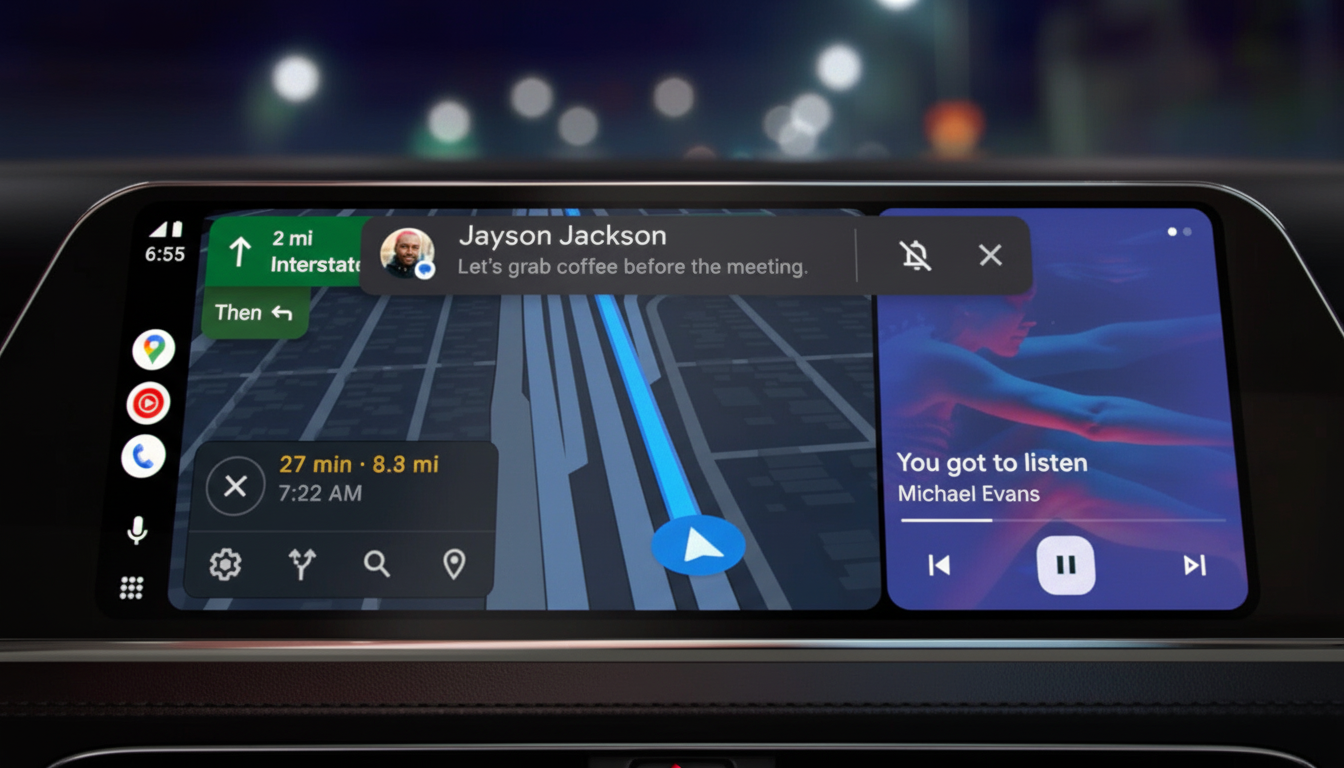Android Auto is getting ready to add home screen widgets to the in-car dashboard, a major step that would enable greater personalization and perhaps reduce the number of times you have to fiddle with your phone.
The feature, codenamed Earth in an early beta build of Android Auto, allows drivers to pin a widget from a phone app directly onto the home screen of the in-car infotainment system. It’s all still experimental, but it already offers a glimpse of how Google aims to combine familiar features from Android phones with the limitations of safe, car-friendly UX.

What Is Coming to the Android Auto Dashboard
The home screen for Android Auto is a two-pane layout in the current design.
The widget section covers about 35–40% of the width, and the primary feed is about 60–65%. You can have only one widget active at a time, and choosing a new one replaces the current pick, a further indication of Google’s delicate attention to your distractions.
Importantly, they are the same widgets you’ll recognize from Android apps on your phone. That includes weather tiles, clocks, calendars, and some media controls, so long as they comply with the layout guidelines and usage rules that Android Auto imposes.
How the Android Auto Widget Picker Works
In the beta we tested (version 5.6.154404-release.daily), a new settings option available during setup labeled Customize Earth launches a widget manager called Widget Companion. When you tap this, a plus button appears, and tapping that will display any apps that can show at least one widget. Select an app, select a widget, and it’s on the home screen.
A scale slider allows you to change the size of the widget in the panel. You won’t find freeform drag-and-drop or drag-and-multi-widget layout yet, but there is a simple delete control to remove the current widget. It is a kind of spartan design, albeit an intuitive one obviously built to promote fast setup — and keep fiddling to a minimum.
Early App Compatibility and Current Limitations
Since the feature is so new, behavior differs by app. Pixel Weather works best, cleanly displaying real-time conditions when location permission is granted. Google Clock’s Stopwatch app — it turns out the company has its own — is available, and so is the Calendar widget that lets you switch between months — the level of glance-and-go robustness exemplified by Android Auto.
Media widgets are mixed. A Spotify widget can surface some transport controls, but interactions with metadata and artwork sometimes attempt to launch the phone app, which Android Auto rightfully blocks with a warning on-screen. The same limitation applies to information-laden widgets such as Gemini or note-taking quick-access widgets meant to hand off to their full apps.

Form factor is another challenge. A lot of Android widgets are built for horizontal or square canvases; on the car’s side panels, some elements end up getting cut off or not using all of their space. For now, the only way to perfect the fit is with the scale slider, so that might mean app developers should build their layouts for in-car viewing.
Safety and Design Considerations for In-Car Widgets
The narrow boundaries of interactivity are not coincidental. Android Auto uses templates and limited touch targets to comply with guidance on driver distraction, which includes guidelines from the U.S. National Highway Traffic Safety Administration. By gating any deep links to full phone apps and pinning widgets all in one panel, the widget experience reduces glance time variability and interaction burden.
Expect Google to rely on lightweight, glanceable information that refreshes where it is. That works well with how Android’s native widgets work — RemoteViews — and how Android Auto’s current Taskbar Widgets give you fast access to your audio and navigation apps. The endgame is something like a curated widget experience, balancing flexibility with repeatable safety behavior across cars, screens, and methods of input.
How It Compares to CarPlay and Other Competition
Apple’s CarPlay currently has no provision for pinning standard iOS home screen widgets in-car and instead relies on app-driven dashboard cards.
If Android Auto brings phone widgets down to the dash with some well-defined safety guardrails, it could present a more personal, at-a-glance layer without asking developers to create completely new in-car UI components.
The change also continues the work of Google’s Coolwalk redesign, which made split-view layouts par for the course in Android Auto. With the Android Auto phone app reporting 5B+ installs in Google Play, even small improvements can have a big impact on behavior when they make routine activities like checking the weather or resuming playback quicker with fewer taps.
What to Watch Next as Android Auto Testing Continues
The Earth codename and sparse controls indicate that this is more of a behind-the-scenes experiment than a launch-ready feature. The to-do list is still obvious: better widget scaling, robust metadata handling for media, and safe interaction patterns that never hand off to the phone.
For builders, optimization will likely involve previewing widget layouts on narrow, car-friendly panes and restricting tap targets to actions that can safely be completed using Android Auto. The promise to drivers is a simple but substantial one: the right info, where you need it, without diving in and out of apps. If Google pulls off the landing, home screen widgets could be one of the most useful updates to Android Auto since its overhaul for split-screening.

